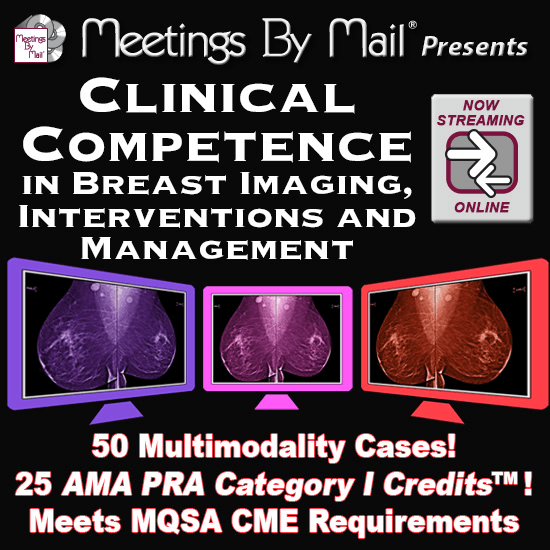Clinical Competence in Breast Imaging, Interventions and Management
Clinical Competence in Breast Imaging, Interventions and Management provides a complete tutorial in all modalities, diagnostic strategies and interventional considerations encountered in the modern breast imaging practice. Its fifty cases allow the participant to explore a wide range of benign and malignant disease, with special focus placed on the variety of presentations and patterns of enhancement observed on mammogram, ultrasound, MRI and tomosynthesis.
This activity also expounds on the many challenges provided beyond the diagnosis, with optimal approaches for intervention and management discussed throughout. The immersive case review experience is supplemented by three insightful lectures by critically acclaimed faculty.
Clinical Competence in Breast Imaging, Interventions and Management is worth 25 AMA PRA Category I Credits™ and meets all MQSA CME requirements.
Cost: $695.00Add to cart
Key Features
50 comprehensive multimodality cases worth 25 AMA PRA Category I Credits™ Fulfills MQSA CME Requirements.
Topics Covered
Breast cancer screening, MR and Ultrasound interpretations, tomosynthesis applications, multimodal interventional procedures, core needle biopsy, BIRADS, pre and post-operative imaging, high risk lesions, screening, lymph nodes, DCIS, invasive malignancies both ductal and lobular, fibroadenomas, papillomas, benign enhancement patterns, phyllodes tumors, male and pediatric applications, radial scars and much more!
Learning Objectives
1. Determine the appropriate strategies for the analysis and treatment of breast lesions. 2. Interpret screening and diagnostic mammograms while recognizing their limitations. 3. Describe the newest guidelines for pediatric breast mass management. 4. Discuss best strategies and potential limitations for breast ultrasound and MRI exam interpretation. 5. Demonstrate the value of tomosynthesis in the analysis of mammography. 6. Explain best strategies for intervention and management following breast pathologic diagnosis. 7. Discuss core needle biopsy techniques and useful alternatives for needle localizations. 8. Describe the appropriate follow-up for MRI-guided core biopsies.
Target Audience
The educational design of this activity addresses the needs of practicing radiologists.

